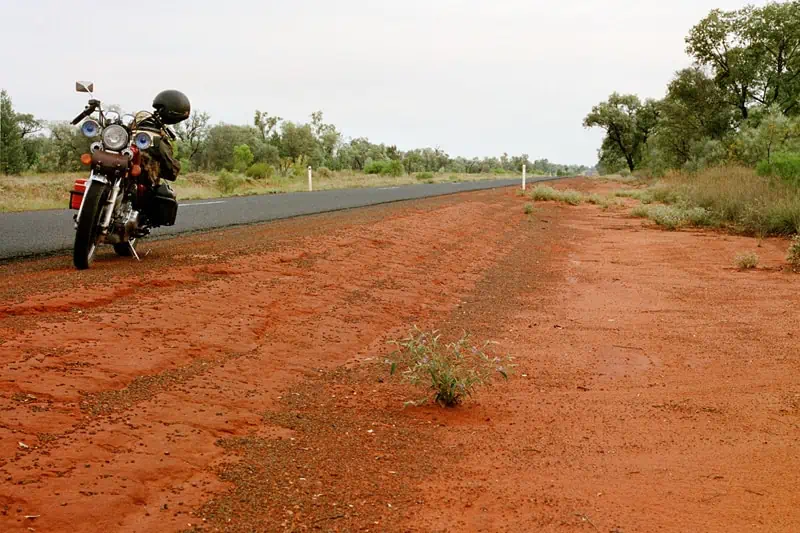Motorcycle Camping

Security is one of the problems staying at hotels or motels, as motorbikes are a lot easier to damage or steal than a car. As more people tour and travel on bikes, the ‘tourer’ as opposed to the ‘biker’ is often better received. Although I have had motels turn me away.
However, 
Equipment
Before you run off and buy gear for motorcycle camping, think about how often you will use it. Will you use hard panniers or soft saddle bags? I prefer saddle bags, as you can unsling and carry them into the tent or any other accommodation. Many people prefer hard, lockable panniers that stay on the bike.
Unlike backpacking, weight when motorcycle camping is not a problem. However, you must avoid oversized bulky items that take up lots of space. A simple checklist for equipment and things is a good idea, even if you are only heading off for a weekend.
Tents
Depending on where you are travelling, a tent is essential to staying dry overnight. If you have ridden in the rain during the day, the least you can give yourself is a dry night’s sleep. Again, if you plan to do a lot of camping in the future, you might want to spend a reasonable amount on a tent. My first long motorcycle camping trip across the Nullabor (pictured above) was with a $20 tent from Kmart. Twenty years later, I have an excellent dome tent with a fly, totally bug-proof, lightweight and packed in a custom-made leather bag.
A good sleeping bag is an integral part of motorcycle camping equipment. A good bag is essential if you plan to travel in colder climates or inland during winter. The sleeping bags available today stuff into bags half as small as they were 20 years ago. To keep them dry, carry the bag in one of your panniers or a saddlebag. If carried outside, place it in a waterproof covering. Nothing is worse than pulling out a wet bag; the warmth factor is zero. Once on a summer ride from Brisbane to Alice Springs, I chose to carry a small swag swung across the back rather than a sleeping bag.
Motorcycle Camping – Be Safe
Whilst the equipment below may horrify some, this configuration gave me enough gear to be comfortable and equipped for every occasion. Safety is the primary consideration when setting up for a long trip and carrying a lot of equipment. You will notice that my gear’s ‘sail’ surface is still reasonably low, and weight is also down low and evenly dispersed.
This ride was over 9,800 kilometres from Hobart to Cairns and through the outback regions of Queensland and New South Wales. There is no doubt that motorcycle camping is one of the last bastions of freedom on the open road. For extensive camping trips, it pays to plan well ahead, be adequately prepared, and carry a good tool kit to resolve breakdowns.
Friends’ accounts of their motorcycle camping trips:
Fun in the Sun – from Adelaide to Sydney on a Vmoto 50cc scooter
Out For A Spin – Asia, Europe and South America
Louisiana Auntie – Montana, Wyoming and Missouri






